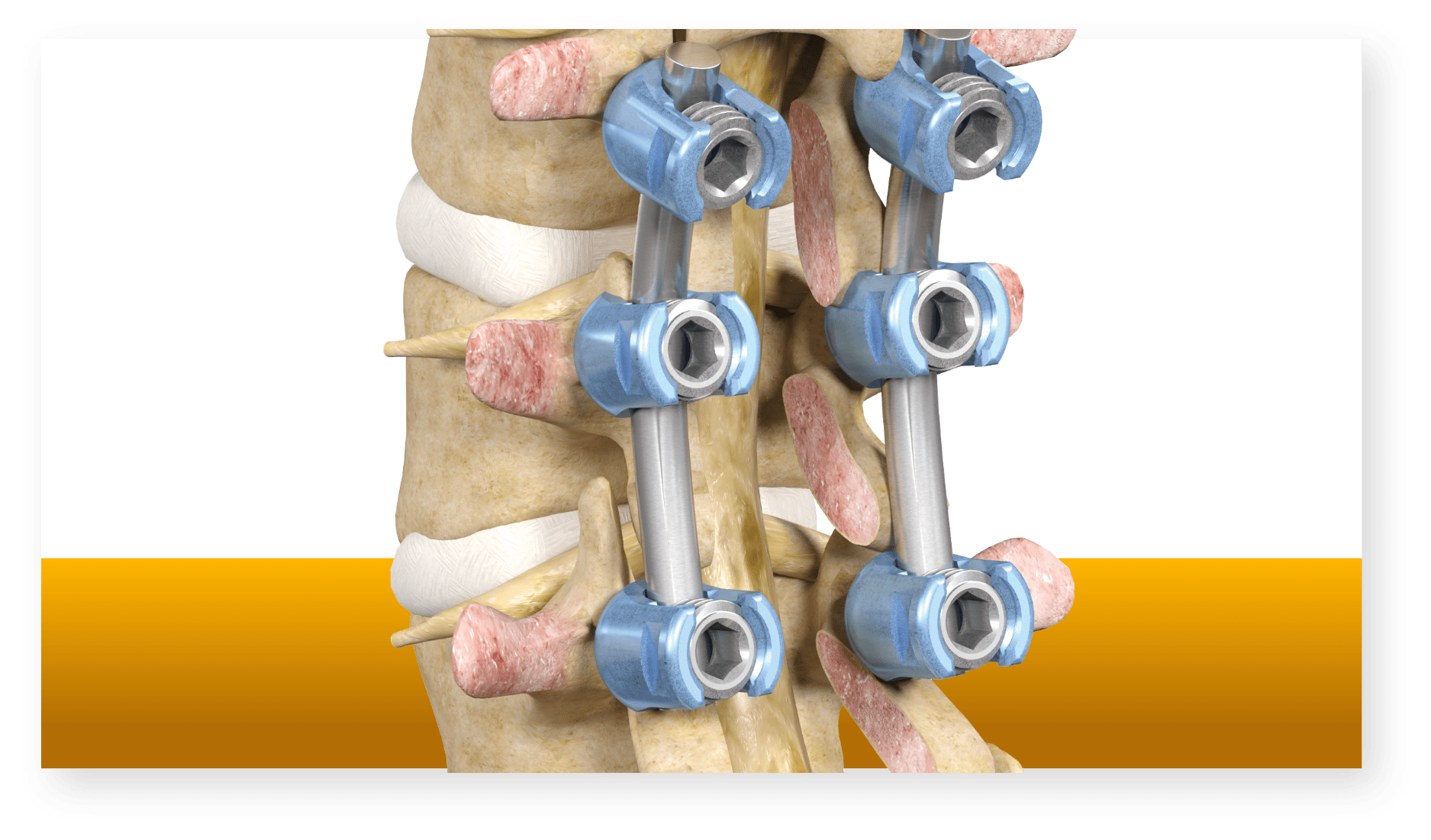Laminectomy and fusion
A thoracolumbar laminectomy and fusion is performed through an incision on your mid- to lower back. This procedure involves fully or partially removing pieces of bone called spinous process and laminae that surround the spinal cord and/or nerves. This is done to enlarge the space for and to help relieve pressure on the spinal cord and/or nerves.
After the laminectomy is performed, natural or synthetic bone material can be added to help fuse the vertebrae. If successful, spinal fusion will typically take place in the weeks and months following surgery. In instances where there is instability, implants such as metal screws and rods can be added to help provide stability to the spine.*

Click to view brochure
A more in depth look at the individual steps of this procedure as well as tips for preparing for and recovering from a laminectomy and fusion.
In general, surgical treatment options presented by your surgeon are aimed at relieving pressure on nerve roots in an attempt to address pain.
* The placement of these implants is intended to assist in a healing process called spinal fusion. If successful, spinal fusion will typically take place in the weeks and months following surgery, and can be assessed by your surgeon on imaging studies (e.g. x-rays) taken during follow up visits.
IMPORTANT INFORMATION ABOUT SPINE SURGERY
Some of the images on this website depict Stryker’s products. Please speak to your doctor if you have questions about these products or anything else in this website.
The information presented is for educational purposes only. Stryker is not dispensing medical advice. Please speak to your doctor to decide if spinal surgery is right for you. Only your doctor can make the medical judgment regarding which products and treatments are right for your own individual condition.
As with any surgery, spinal surgery carries certain risks. Your surgeon will explain all the possible complications of the surgery, as well as side effects. Each spinal surgery patient will experience a different post-operative activity level, depending on his/her own individual clinical factors. Your doctor will help counsel about how to best maintain your activities in order to recover properly from your surgery. Such activities include not engaging in high-impact activities that could de-stabilize any instrumentation that may have been implanted.
Stryker Corporation or its divisions or other corporate affiliated entities own, use or have applied for the following trademarks or service marks: Stryker. All other trademarks are trademarks of their respective owners or holders.
Ask your doctor if spine surgery is right for you.
GEN-WB-24-32016
